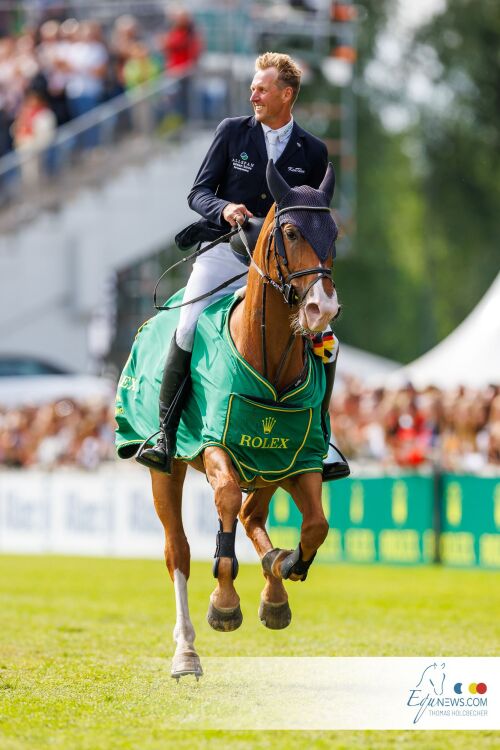It seems uncoinceivable that two species as different in attitude and demeanor as the human predator and the equine prey animal could be ruled by the same learning principles. There is a long list of characteristics that distinguish predator versus prey.
One of the horses’ gifts is to draw out and reinforce emotion, intuition and trascendence, all trademarks of output from right - emispheric brain. When comparing predator - prey characteristics, significant differences are underscored. Many of the tensions and anxieties we experience in our professional lives, as well as our inability to find true satisfaction, stem from the left and right - brain dichotomy. That’s the predator curse… We crave rewards… We want to know “Where is the cookie? Where is are money or the next promotion? This endless thirsting after the next prize guarantees a restless nature.
[caption id="attachment_84414" align="aligncenter" width="400"] Skelton Nick, GBR, Big Star
Skelton Nick, GBR, Big Star
Olympic Games Rio 2016
© Hippo Foto - Dirk Caremans
19/08/16[/caption]
The horse brings a different perspective. His motivation is to be left in peace and to be free from demands. A horse looks for a right – brain sensibility in his handler. So, as predators, we must learn we have much to gain from dedicating ouserlves to letting go as we do from grabbing for more. We need to learn how horses learn and, in the process, we can adopt a new approach to life. Horses have a dramatically different notion of reward. The predator’s brain might say something like this: “Hey, I want something to eat”. A prey animal’s brain, on the other hand, may politely inquire: “What do I need to do to avoid unpleasant situation”. So the difference is fundamental… This is only the first step. In the context of training the road is very very long. We need time, patience, cleverness, knowledge. We must be familiar with an important principle of learning theory in order to understand the structure of training. It is Behaviorism.
Behaviorism is a school of psychology that asserts that any organism, from the lower bacterium to the highest order primate, learns by conditioning, the pairing of behaviour and response, that can be subdivided into classical or operant types. ‘Behaviorism’ is the casual and temporal relationship between an event (stimulus) and the stereotypic behaviour that follows the stimulus (the response).
Classical conditioning is a particular kind of coupling between an initially neutral stimulus with a natural reflex. Classical conditioning occurs in all organism, including horses. Operant conditioning is a method of training that occurs when we move away from natural reflexes and into neutral stimuli. There are a lot of ethological studies and scientific books about conditioning. It’s our duty to inform us in order to better understand our horses and create a good relation with them. With Bertram Allen and Edward Levy
What is ‘Behaviorism’? Ethological tips on horse-human relationship.
-
categories: Europe



